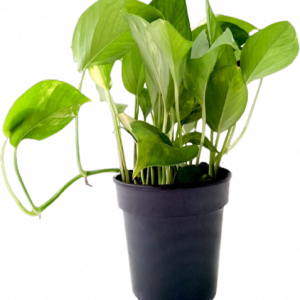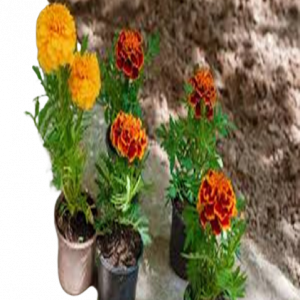Morpankhi/Thuja Plant
50 in stock
The plant of peacock is evergreen, it has red and brown bark on top. The height of these trees can be about 3 to 65 meters or more. Its leaves are plain on both sides, whose length is about 1 to 10 mm. Peacock plants have both male and female types.
₹145.00 ₹220.00
50 in stock
The peacock tree or Vidya tree is related to the species of coniferous trees of the family. scientific name of peacock
Platycladus is Orientalis. It is known as Thuja or Oriental Thuja in the English language. There are a total of five species in this genus, three of which are in East Asia, and two in North America. Deodar tree also belongs to this species.
The peacock plant is evergreen, with red and brown bark on top of it. The height of these trees can be about 3 to 65 meters or more.
Its leaves are plain on both sides, whose length is about 1 to 10 mm. Peacock plants are both male and female. Male plants have smaller cones, and female plants have larger cones. When the plant is about a year old, each row pair has one or two small seeds.
The five species of Morpankhi Thuja are evergreen and small and big trees. The leaves of plants in all species are flat fan-like. The color of its seeds is light green. The seeds turn black after ripening. There are many benefits of keeping peacock in the house. Apart from this, peacock is also applied to enhance the beauty of the house and gardens.
Morpankhi Plant Benefits
1. Peacock plant along with enhancing the beauty of the house, it also benefits in many things. If the peacock plant is planted according to Vastu, then it is also considered a symbol of happiness and prosperity in the house. So let’s know, the benefits of peacock feathers, and in which direction it should be planted in the house and many more information –
2. The peacock plant should be planted in pairs according to Vastu. If Vidya tree is planted in the house in pairs, then it brings happiness, prosperity and positive energy in the house. And it gets rid of many troubles.
3. Most of the people plant the peacock plant in their gardens to enhance the beauty of the house. But it also has many medicinal properties. It is used in many homeopathic and Ayurvedic medicines. The energy emanating from the peacock plant also protects against many diseases.
4. It is also believed about the peacock plant, that by planting this plant in the house, Shri Lakshmi resides in the house. And the grace of Shri Lakshmi ji remains. If you have not yet planted Vidya tree or Peacock tree in your house, then please definitely plant it in your house.
Where or in which direction should the peacock plant be planted?
The peacock plant should always be planted in pairs at the main entrance of the house.
The peacock plant should never be planted alone.
Along with making the house ventilated, it also prevents negative energy from entering the house.
The peacock plant should never be allowed to dry out.
Whenever the water in the Vidya tree starts drying up, the plant should be watered immediately.
According to Vastu, the peacock plant should be planted in the north or east direction, due to which the grace of Shri Lakshmi ji remains in the house.
Always plant the peacock plant in such a place where the plant can get enough sunlight.
How to Prepare Seeds to Grow Peacock Plants
Seeds start to set on the peacock plant in the summer days.
After this, it gets ready for ripening in the months of August and September.
After ripening, the color of these seeds becomes black and light brown.
When the peacock seeds are ripe, they should be plucked from the plant, otherwise they burst on the plant after a few days, and their seeds fall on the ground.
After breaking the ripe seeds of peacock, the seeds should be removed from inside them.
After this, these seeds should be dried in the sun or shade for about three days.
Dry these seeds until the moisture content inside it remains about 10%.
After this, the peacock seeds should be kept in an air tight container. So that the seed does not get wind.
Some people have a question, what is the right time to plant the seeds of peacock? These seeds should be sown in the months of May and June.
How to Grow Morpankhi Plant from Seeds
To plant a peacock plant from seed, first of all, you have to take an earthen pot or any plastic tray.
While choosing a pot or tray, you have to take special care of one thing, it is very important to have holes for water to drain under it.
After taking the pot, cover the bottom of the pot by placing some pebbles on it.
Now prepare a good and fertile soil mixture.
To make fertile soil, a good mixture can also be prepared by mixing normal garden soil and burmicompost inside it.
After preparing the soil, fill it in the pot.
After this, plenty of water should be poured into the pot.
When there is complete moisture in the pot, according to the number of seeds of your peacock feathers, pits should be made in the soil at a distance of one inch from any wood.
After this, plant the peacock seeds in the pot at a depth of about one and a half inches.
After planting the seeds, again spread a light layer of soil over the pot and fill the pot with water.
After planting the seeds, place the pot in a place where sunlight comes. Keep in mind that if it is hot weather, then keep the pot in a place with light shade.
Keep the moisture in the pot until the plants start growing from the seeds.
In about one to two months, the peacock plants will be able to be planted in another big pot.
How to Grow Morpankhi Plant From Cutting
It is very easy to plant peacock plant from cuttings. It is planted from cuttings in the same way as other plants. Just like we grow rose plant from cuttings, in the same way the peacock plant is also grown. Let us know, how to plant a peacock tree from cuttings.
To plant a peacock plant from a cutting, you first have to take a cutting of five to seven inches.
All these cuttings have to be cut with a sharp blade, after that a pot has to be selected for planting these cuttings.
After taking the pot, use sandy soil to plant these cuttings.
After filling the pot with sandy soil, add plenty of water to it.
When all the water comes out from the hole at the bottom of the pot, make a hole in the soil of the pot with some wood according to the number of cuttings.
After this, soak all the cuttings in water and apply rooting hormone powder on their roots. This gives roots very quickly.
After applying rooting hormone powder on the cuttings of peacock feathers, water should be poured into the pot by planting them in the pots made in the pot.
After this, keep the pot in a light shade place, and sprinkle water lightly inside the pot every day.
Roots will emerge from all these cuttings in about two and a half to three months.
When all the cuttings have come out with roots, then they should be planted in a big pot.
Morpankhi Plant Care How to take care of Morpankhi Plant
Soil is the most important for the care of the peacock plant.
When planting the plant in the beginning, then prepare a good soil mixture.
To prepare the soil, prepare a mixture by taking one part normal soil, one part vermicompost, and one part cockpit. If you don’t have a cockpit, use slightly sandy soil instead.
The peacock plant needs to be watered daily during the summer. But never give too much water, so that the roots of the plant start to deteriorate.
Peacock plants require a lot of sunlight. Always choose a place to plant the plant, where there is about four to five hours of sunlight in a day.
Morpankhi needs to be fertilized once in a month. For this, you should soak about 1 kg of cow dung manure in 10 liters of water for two to three days. After this you can use this liquid manure in all the plants.
Apart from this, you can also give dry cow dung manure to the peacock plants. For this, you should make a little distance from the root of the plant and put a small amount of old manure all around.
By fertilizing the Vidya tree in this way, it grows very well. And its leaves remain green.
It is very necessary to cut the peacock plant after March and rainy season. Due to this the plants remain in shape, and do not spread much like a bush.
In summer, the leaves of the peacock plant start turning yellow. To avoid this, water should be sprayed on the plants once or twice in the summer week.
If any kind of kite moths are found on the peacock plant, then for this, you can spray neem oil on the plant after mixing it with water.
How to take care of peacock plant in winter?
This is the biggest problem in the winter season. Some people’s trees start getting damaged during winters. So let’s know, what things should be taken care of in winter to take care of the peacock plant.
This plant does not require much care in winter. Just you should not give much water to the peacock plant in the winter season. Its leaves start getting damaged due to excessive watering. Apart from this, if your plant is in a place where there is no sunlight, then lift the pot and keep it in a sunny pla
Based on 0 reviews
Be the first to review “Morpankhi/Thuja Plant”
You must be logged in to post a review.
You may also like…
-
Plants
SNAKE PLANT
Dracaena trifasciata is a species of flowering plant in the family Asparagaceae, native to tropical West Africa from Nigeria east to the Congo. It is most commonly known as the snake plant, Saint George’s sword, mother-in-law’s tongue, and viper’s bowstring hemp, among other names.
Scientific name: Dracaena trifasciata
Subfamily: Nolinoidae
Family:Asparagaceae
Order: Asparagales
Kingdom: Plantae
SKU: SNEK PLANT -
Plants
PETRA CAROTAN PLANT
The colorful leaf of croton along with the air purifying power makes it unique and special. Croton Petra is in general a fairly low maintenance plant and generally very easy to grow. This beautiful Croton Petra is actually the most famous plant. This plant is best for home decoration.
SKU: PETRA KAROTAN PLANT













There are no reviews yet.